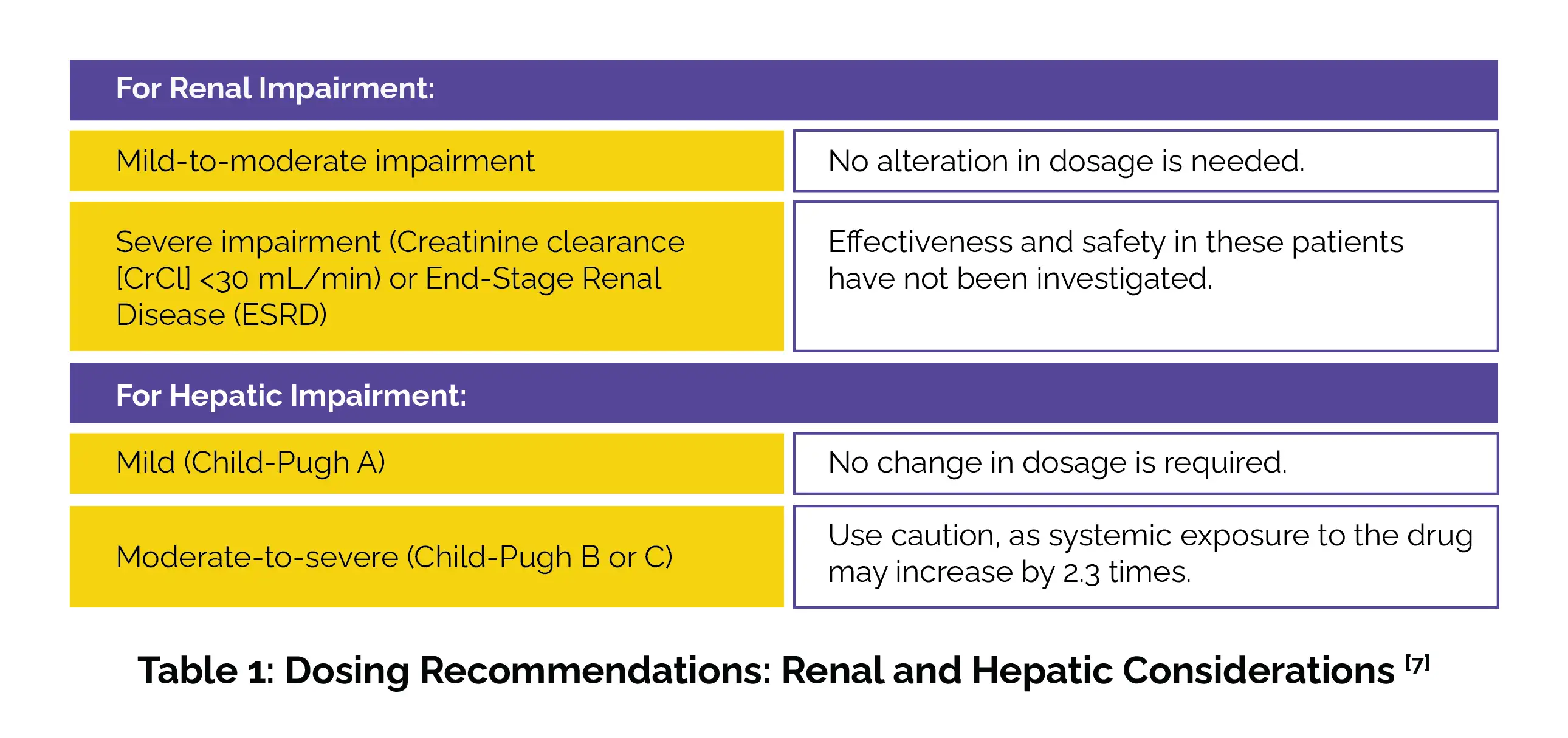Categories
Change Password!
Reset Password!


Ensifentrine is a selective dual inhibitor of the phosphodiesterase enzymes, with potential anti-inflammatory and bronchodilatory effects. [1,2] It is used for the maintenance therapy of chronic obstructive pulmonary disease (COPD) in adults. On 26 June 2024, the Food and Drug Administration (FDA) authorized its inhalable version for relieving COPD in adults. This form of the drug is delivered directly to the lungs, where it works to expand the airways and decrease inflammation associated with COPD. [1]
Pharmacological Class: Phosphodiesterase inhibitors [3]
Ensifentrine is a selective dual inhibitor of the phosphodiesterase enzymes, with potential anti-inflammatory and bronchodilatory effects. [1,2] It is used for the maintenance therapy of chronic obstructive pulmonary disease (COPD) in adults. On 26 June 2024, the Food and Drug Administration (FDA) authorized its inhalable version for relieving COPD in adults. This form of the drug is delivered directly to the lungs, where it works to expand the airways and decrease inflammation associated with COPD. [1]
Pharmacological Class: Phosphodiesterase inhibitors [3]
Ensifentrine is used to control wheezing, shortness of breath, coughing, chest tightness and is indicated for the long-term management of COPD in adult patients. [3,4]
COPD is marked by progressive airflow obstruction and chronic inflammation of the respiratory tract. Phosphodiesterase 3 (PDE3) and phosphodiesterase 4 (PDE4), members of the PDE superfamily, hydrolyze cyclic adenosine monophosphate (cAMP) and cyclic guanosine monophosphate (cGMP) into inactive 5' monophosphates. [2] PDE3 is predominantly expressed in bronchial smooth muscle and primarily regulates airway smooth muscle tone. PDE4 is found in immune cells such as T-cells, eosinophils, monocytes, neutrophils, dendritic cells, and macrophages. PDE4 is critical for activating and migrating inflammatory cells, as well as stimulating the cystic fibrosis transmembrane conductance regulator (CFTR) protein in bronchial epithelial cells, contributing to inflammatory processes. [1,2]
Ensifentrine is a novel inhalational PDE3 and PDE4 blocker. It improves bronchodilation and minimizes inflammatory markers by acting specifically on the bronchial tissue, with minimal systemic effects.[5] Its pharmacological profile reveals an approximately 3,700-fold greater affinity for PDE3 compared to PDE4. [6] Inhibition of PDE3 and PDE4 increases intracellular cAMP and/or cGMP levels. This dual action results in a synergistic effect, promoting airway smooth muscle relaxation and markedly reducing inflammation. Activation of CFTR also leads to reduced mucus viscosity and enhanced mucociliary clearance. These combined actions make ensifentrine a promising therapeutic option for managing COPD. [1,2]
Ensifentrine's recommended dosage is 3 mg (one unit-dose ampule), given twice daily. Each dose should be inhaled using a standard jet nebulizer with a mouthpiece, once in the morning and once in the evening.
Dosage Forms and Strengths: Inhalation suspension: 3 mg/2.5 mL aqueous suspension in unit-dose ampules [4]
Dosage Modifications: Table 1 summarizes dosage adjustments in renal and hepatic dysfunction.

Absorption
Volume of Distribution
For ensifentrine, the apparent central and peripheral volume of distribution are as follows:
(a) In healthy subjects:
(b) In COPD patients:
Protein binding
In vitro plasma protein binding is about 90%.
Metabolism
After a single nebulized dose (8 times the suggested dose), unchanged ensifentrine is the major drug-related component in human plasma, reflecting:
(a) 96% of the drug-related material at time to peak drug concentration (Tmax)
(b) 99% in time-normalized (0-24 h) plasma samples
Primary metabolic routes:
(a) Oxidative processes (e.g., hydroxylation, O-demethylation)
(b) Conjugation (e.g., glucuronidation)
In vitro studies show ensifentrine is predominantly metabolized by CYP2C9, with lesser involvement of CYP2D6 at physiologically relevant concentrations.
Route of Elimination
The majority of drug is excreted in feces.
Following a 3 mg nebulized dose, urinary excretion of unchanged ensifentrine is insignificant (<0.3% of the dosage).
Half-life
After twice-daily administration for 6 days (1.5 mg to 12 mg), the terminal elimination half-life ranged from 10.6 to 12.6 hours in both healthy people and COPD sufferers. [1,4]
It is contraindicated in patients who have a hypersensitivity to ensifentrine. [4]
Ensifentrine can potentially increase the blood pressure-lowering (hypotensive) effects of isosorbide mononitrate. [1]
The most commonly reported adverse effects (1-10%) are:
The less commonly reported side effects (<1%) are:
Findings from phase III ENHANCE trials
In phase III trials (ENHANCE-1 and ENHANCE-2), the efficacy of nebulized ensifentrine was investigated in 1549 patients (aged 40-80) suffering from moderate to severe COPD. As found, ensifentrine markedly improved lung function by 87 ml in ENHANCE-1 and 94 ml in ENHANCE-2. In ENHANCE-1, it also improved symptoms and quality of life as measured by the Evaluating Respiratory Symptoms (E-RS) and St. George’s Respiratory Questionnaire (SGRQ), respectively. However, no such improvements were seen in ENHANCE-2.
Moreover, ensifentrine reduced the rate of moderate or severe exacerbations over 24 weeks compared to placebo (rate ratio of 0.64 in ENHANCE-1 and 0.57 in ENHANCE-2), with a considerable rise in the time to first exacerbation (hazard ratio of 0.62 in ENHANCE-1 and 0.58 in ENHANCE-2). The occurrence of adverse events was comparable to those for placebo, suggesting a favorable safety profile. These results highlight ensifentrine's potential in boosting lung function and reducing exacerbation rates in COPD sufferers, even when used alongside other maintenance therapies. [8]
Another pooled analysis of two phase III ENHANCE trials assessed ensifentrine's impact on lung function in moderate-to-severe COPD patients. The trials included 1,548 patients (ensifentrine: 975, placebo: 573) aged 40–80 years. Ensifentrine provided early and sustained improvements in lung function, with effects persisting through 24 weeks. These findings underscored ensifentrine as the first novel maintenance bronchodilator in over 20 years, offering dual benefits of bronchodilation and anti-inflammatory activity. [9]
Findings from review, systematic review, and meta-analysis
In a review of 7 studies involving 2,870 moderate-to-severe COPD patients, ensifentrine illustrated consistent improvements in lung function, especially in peak forced expiratory volume in 1 second (FEV1), when used in combination with other bronchodilators. Additionally, exacerbation rates were reduced by 43%, and quality of life, as assessed by SGRQ scores, showed prominent improvements. Also, ensifentrine exhibited a good tolerability profile across the studies. [10]
A systematic review and meta-analysis of 4 randomized controlled trials (RCTs) examined ensifentrine's efficacy and safety in COPD. The analysis focused on studies where ensifentrine was administered for a minimum duration of 4 weeks. The results showed that a 3 mg dose of ensifentrine markedly improved FEV1 by 40.90 mL, reduced dyspnea by 0.91 points as measured by the transition dyspnea index, and enhanced quality of life by 1.92 points as measured by SGRQ. Furthermore, the drug's safety profile was similar to placebo, with no significant rise in treatment-emergent adverse events. Thus, ensifentrine not only enhances key clinical outcomes—lung function, dyspnea, and quality of life in COPD sufferers—but also has a robust safety profile. [11]
Another systematic review and meta-analysis explored ensifentrine's efficacy and safety in COPD patients. Overall, 4 studies and 2,020 patients, were selected. Ensifentrine 3 mg demonstrated major improvements compared to placebo in several key outcomes: peak FEV1 (MD 149.76 mL), morning trough FEV1 (MD 43.93 mL), transition dyspnea index (MD 0.92), E-RS (MD -1.20), and SGRQ (MD -1.92) scores. Thus, ensifentrine substantially improves lung function, symptoms, and quality of life in COPD patients, making it a promising therapeutic option. [12]
Findings from phase IIb dose-ranging study
In a study by Singh D et al., ensifentrine was well-tolerated and showed remarkable improvements in bronchodilation and respiratory symptoms, with a dose-ranging effect, particularly between 0.75 and 3 mg twice daily. This phase IIb study investigated ensifentrine's potential for COPD management. Overall, 405 volunteers were randomized to inhale nebulized ensifentrine at doses of 0.75, 1.5, 3, or 6 mg, or placebo twice daily for about 4 weeks. The primary endpoint was the placebo-adjusted difference in peak FEV1 at week 4.
As found, all doses of ensifentrine markedly improved peak FEV1 compared to placebo, with least squares mean differences ranging from 139 to 200 mL. Respiratory symptoms, estimated via the E-RS questionnaire, also considerably improved at week 4 for all ensifentrine doses. Adverse events were reported in 33.3-44.4% of patients in ensifentrine group, which was comparable to 39.2% in the placebo group. [13]
Comments (0)